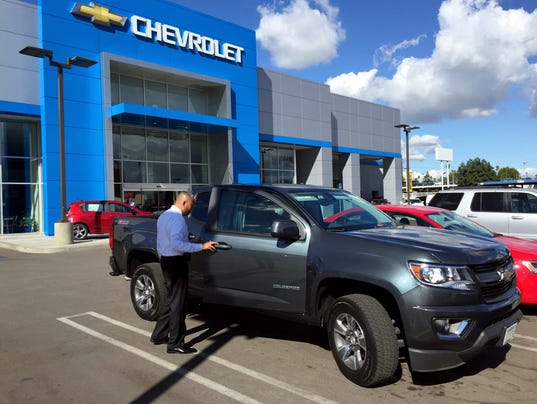
About 40% of people shopping for a new car in 2018 will have a vehicle to trade in, according to Edmunds transaction data. And it’s safe to say that 100% of those people will want to get as much money as possible for that trade-in.
But while most shoppers have some sort of strategy for getting a good deal when they’re buying a car, they may not have a plan to extract the most value from their trade-in.
Here are tips to help you get the most for your soon-to-be ex-car, along with some common and costly mistakes people make.
Get more than one offer
Your first step in getting a clear-eyed estimate of your car’s value is to appraise it online. You can obtain an appraisal at Edmunds and other sites. Be honest about your car’s condition and be accurate in accounting for its trim level and packages.
You should also get the real valuations in person. Consider getting trade-in quotes from several dealerships. If you live near a CarMax or EchoPark location, even better. These used-car superstores offer to buy vehicles outright with no pressure to buy a car from them.
Having multiple trade-in offers will help you understand your vehicle’s actual value. With that number in hand, you’re less likely to be talked into taking less for your trade-in when you’re buying your new car.
Time the trade-in
Trade in your car before it’s time to renew your vehicle annual registration. If you pay the registration and then trade in the car, you’ve essentially paid that fee for the next owner.
If you’re trading in a leased vehicle (which people do sometimes before the lease is up), do so right before your next payment is due. Lease payments are for the upcoming month. Don’t pay for a car you won’t be using.
Last-minute repairs and recalls
You might be tempted to pour time or money into car repairs, hoping you’ll get an exponentially greater trade-in value. Unfortunately, that’s not likely to happen.
Most dealerships can fix mechanical and cosmetic problems for less than you can, and if the dealership’s estimator (usually the used-car manager) sees something amiss, that will be factored into the cost of reconditioning. A dealership might ding you $500 in value for having a set of bald tires, for example. Accepting that makes more sense than spending $1,000 to replace the bald tires. You certainly won’t be offered enough to offset that expense.
You should, however, attend to any pending recalls before you attempt to trade in the vehicle. Remember that recall repairs are free of charge to the owner. Depending on the severity of the recall, the dealer might not be able to sell the car until the defect is fixed, and a dealership is unlikely to pay top dollar for a trade-in that it can’t easily resell. See if your vehicle is subject to a recall at the National Highway Traffic Safety Administration’s website. Just enter your vehicle identification number.
Impact of insurance claims
If you’ve been in an accident, it helps to understand the effect of insurance claims on your car’s trade-in value.
Most accident repairs that are paid by insurance companies are reflected on vehicle history reports, such as those from Carfax and AutoCheck. Unfortunately, these reports don’t explain if the accident was a major or a minor one.
An accident in your vehicle’s history report is almost sure to drop the trade-in value. This is something to keep in mind for your next car: If an accident is a minor one with minimal damage and the cost of the repair is close to your deductible, think about paying for the repairs yourself.
Plan for the future
Once you’ve traded in your old car, it’s never too early to think about trade-in value of your new car. Keep all your service records and your receipts, such as for new tires. In the eyes of a dealership, a person who keeps records is a responsible car owner, regardless of the work performed on the car. These people tend to have cars that are well-maintained, and that’s valuable to a dealer even if the vehicle is getting on in years.
Try to have your new vehicle waxed or detailed at least once a year. This schedule can help your car receive a “clean” condition designation at trade-in rather than the lower condition, “fair.” This upkeep can net you more dollars. The value difference will depend on the age and the class of car: The difference between “fair” and “clean” on a 10-year-old economy vehicle may not be as great as on a much newer luxury car.
EDMUNDS SAYS: Do a little planning and think like a dealer, and you can easily get more money for your trade-in.
source:-usatoday







